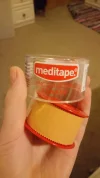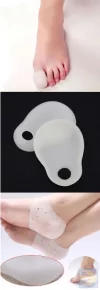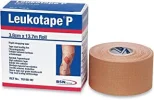Hi all,
I am a fan of the prophylactic and therapeutic dual purpose of zinc oxide tape (pictured).
I'm curious as to what methods of preventing blisters other pilgrims swear by and think it would be nice to get a breakdown of the popularity of each all together in a poll.
There have been lots of posts describing the rationale behind each already. This poll also excludes some of the pre-Camino steps one can obviously take such as: breaking-in shoes, carrying less weight, getting suitable footwear and socks, etc..
I may do another poll on people's preferences of blister treatment too

I am a fan of the prophylactic and therapeutic dual purpose of zinc oxide tape (pictured).
I'm curious as to what methods of preventing blisters other pilgrims swear by and think it would be nice to get a breakdown of the popularity of each all together in a poll.
There have been lots of posts describing the rationale behind each already. This poll also excludes some of the pre-Camino steps one can obviously take such as: breaking-in shoes, carrying less weight, getting suitable footwear and socks, etc..
I may do another poll on people's preferences of blister treatment too
































